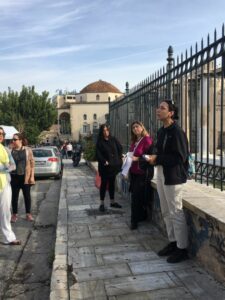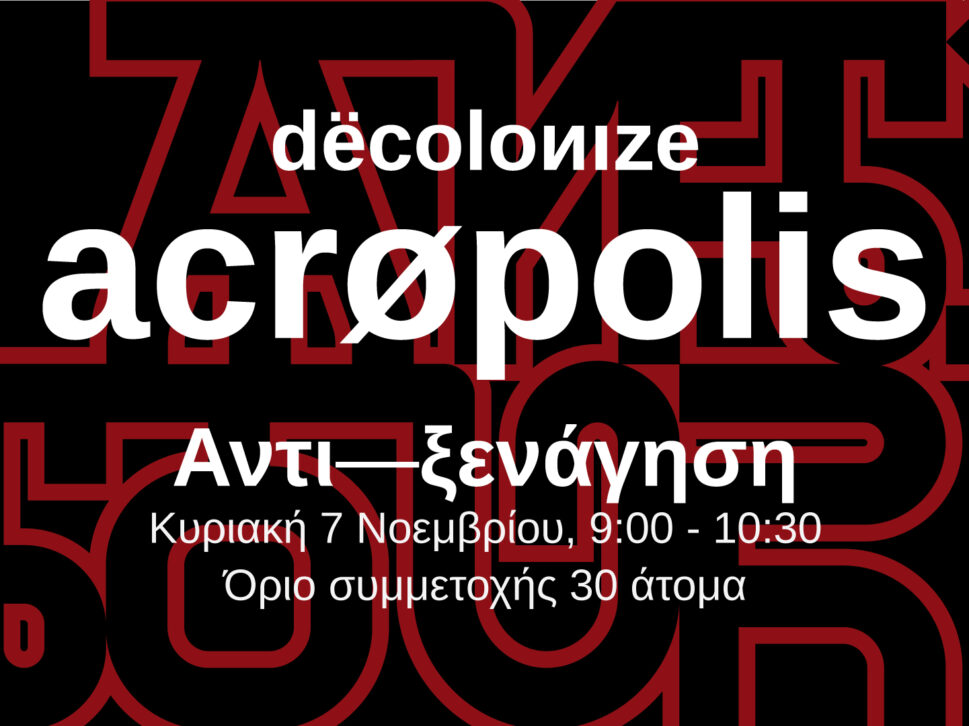Decolonize the Acropolis

After two centuries of national cleansing, which are the most important monuments and material remnants of the Ottoman period of Athens and Acropolis (which probably stands as the most emblematic monument of Western civilization)? How was the Ottoman Athens structured in terms of its characteristics and peculiarities, its economic life, its demographics and its urban architecture? How did the Ottoman Athens relate to its ancient past and the monuments from the classical era? Under what circumstances did Francesco Morozini bombard the Parthenon during the excursion he led in order to reconquer Athens from the Ottomans? How did Athens look before the revolution and how was the siege of Acropolis organized?
Last November, we organized an anti-tour in order to track those questions with the help of Leonidas Moiras (who is teaching Ottoman History in the University of Athens) and his team of historians. The anti-tour started at the Tzistarakis Mosque in Monastiraki, stopped at the Fethiye and Kioutsouk Mosques and the Benizelos’ Mansion, and finished in the Horologion of Kyrrhestes, viewing the rock of Acropolis. We sought for an open discussion with a wider audience of non-experts, in order to deconstruct the hierarchies of knowledge that lead to the silencing and erasure of whole cultures and historical eras.
This anti-tour was part of a wider project by dëcoloиıze hellάş which aims to open new routes in the monumental landscape of Acropolis and the city of Athens, by organizing a series of actions, webinars, and artistic events. The project is coordinated by Leonidas Moiras along with a team of researchers and historians from the University of Athens, a team consisting of Eleni Anastasopoulou, Kostakis Mpampes and Kostas Zouvelos.
The anti-tour was held in Sunday, November 7, in the context of dëcoloиıze hellάş first symposium, under the title “Decolonizing Hellas. Imperial Pasts, Contested Presents, Emancipated Futures, 1821-2021”.
Below, you can find some photographs taken during the anti-tour:







